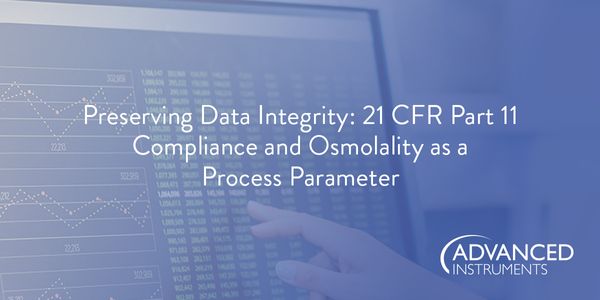Process Monitoring
Process Monitoring: Program process monitoring is an assessment of the process of a program or intervention. Process monitoring falls under the overall evaluation of a program. Program evaluation involves answering questions about a social program in a systematic way.
-
Random drug testing is used as a preventive and detection tool for drug or alcohol use, and medication compliance in the monitoring of regulatory and treatment compliance monitoring. Urine sc...Speaker: John Furman, PhD, MSN, COHN-S
NOV 05, 2019 | 8:00 AM
DATE: November 5, 2019TIME: 8:00am PSTThe International Committee for Harmonisation issued their recommendations on validating an analytical instrument, ICH Q2, to support users of a...
OCT 22, 2019 | 9:00 AM
DATE: October 22, 2019 TIME: 9:00am PDT, 12:00PM EDT...
Speaker:
Angela Bazigos
, Kristeena Wright, PhD
, Shweta Nair
Sponsored By: Advanced Instruments
SEP 12, 2019 | 10:00 AM
DATE: September 12, 2019TIME: 10:00am PDT, 1:00pm EDT...
Learning objectives:1. Metagenomic analysis is already complex, and complicated further by incomplete and non-standardized databases of known organisms2. Fungi may have their own 'mic...
Speaker:
Patrick Chain, PhD
JUL 24, 2019 | 8:00 AM
DATE: July 24, 2019TIMEL 8:00am PT Mass cytometry (CyTOF®) is a powerful approach to characterize the immune composition of complex biological specimens and gain insights in...
JUN 19, 2019 | 10:00 AM
DATE: June 19, 2019TIME: 10:00am PDT, 1:00pm EDT As we develop new methods to create more biologically relevant models for research in understanding disease etiology and in...
With the legalization process currently taking place in the US, finding new techniques for the fast, cheap, and comprehensive analysis of Cannabis sativa components has become a major point o...
MAR 20, 2019 | 9:00 AM
DATE: March 20, 2019TIME: 9:00am PDT...
FEB 20, 2019 | 9:00 AM
DATE: February 20, 2019TIME: 9:00am PST ...
Preclinical drug discovery is at the edge of a major transformation that promises to improve translation to the clinic through enhanced acquisition and advanced analysis of data. While an imp...
DEC 12, 2018 | 7:00 AM
DATE: December 12, 2018TIME: 07:00am PST, 10:00am EST Currently, the Cleveland Clinic Biorepository is an assembly of several biobanks tog...
Clinical testing with next generation sequencing requires a complex bioinformatics pipeline to process raw DNA sequence into interpretable variants for medical reporting. With sequencin...
As the most common female malignancy, breast cancer is the most likely reason that a woman will die of cancer around the world. Breast cancer mortality has dropped in the U.S. by 35% since 19...
Speaker:
Benjamin Anderson, MD
Lung cancer is the leading cause of cancer-related mortality worldwide. Large-scale sequencing studies have revealed the complex genomic landscape of NSCLC and genomic differences between lun...
Speaker:
Nicholas McGranahan, PhD
Two projects looking at novel approaches to targeting inflammatory breast cancer will be presented. Inflammatory breast cancer (IBC) is a unique, understudied, and most lethal subtype account...
Speaker:
Kevin Williams, PhD
























